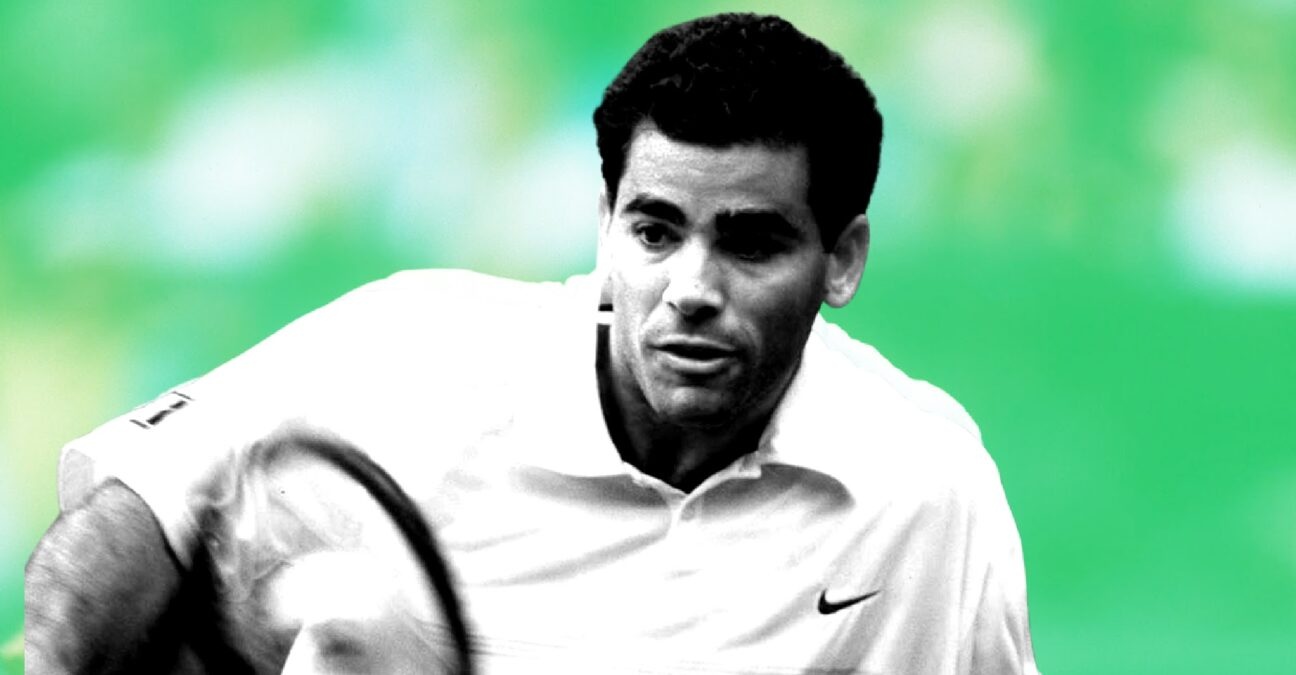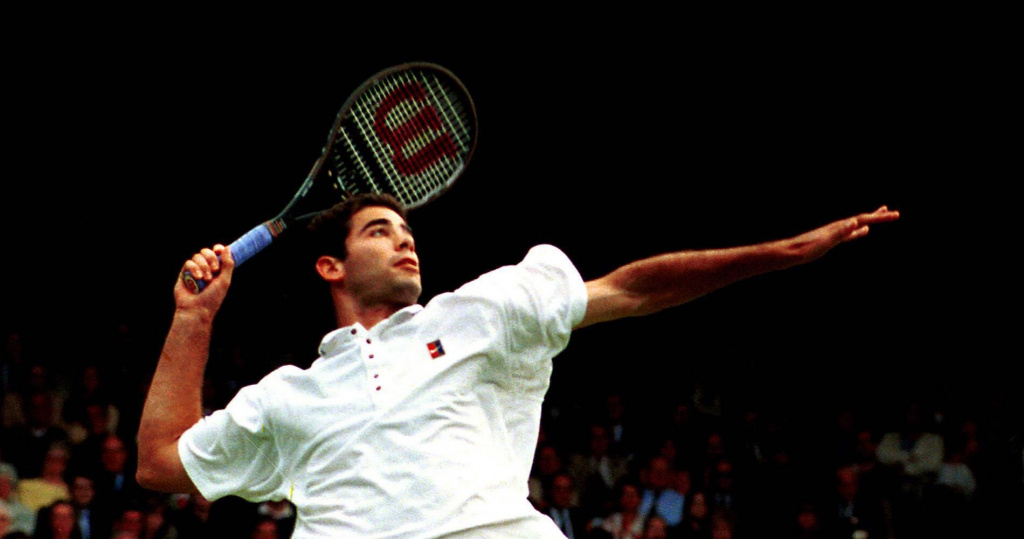March 2, 1988: The day 16-year-old Pete Sampras earned his first top 25 win in Indian Wells
Each day, Tennis Majors takes you back in time to a historic moment in tennis history. On this day (March 2, 1988), a 16-year-old Pete Sampras advanced to the third round of the Indian Wells tournament
 Sampras OTD 03_02
Sampras OTD 03_02
What happened exactly on that day?
On this day, March 2, 1988, in Indian Wells, a 16-year-old Pete Sampras was playing only the second professional tournament of his career. Sampras defeated world No 25 Eliot Teltscher 7-5, 6-3 in the second round. Although he lost in the following round, it was the first display of his potential, just a little more than two years before he claimed the first of his 14 Grand Slam titles.
The players: Pete Sampras and Eliot Teltscher
- Pete Sampras: American tennis’s new hope
Pete Sampras, born in 1971, was one of many extremely young and talented American players taking their first steps on the tour in the second half of the 1980s. If Andre Agassi was far ahead at the time, having already entered the top 100 with an ATP title to his credit, Sampras, along with Jim Courier and Michael Chang, was only playing his first ATP events at the start of 1988. Sampras had needed some time to adjust to a major change in his game, as he had switched from a two-handed backhand to a one-hander at the age of 14 in order to develop a more aggressive game.

- Eliot Teltscher: top 10 player from California
Eliot Teltscher, the son of a Holocaust survivor, was born in 1959 in California. He turned pro in 1979 and became a consistent top 10 player in the first half of the 1980s, climbing as high as No 6 in 1982. Over the years, he reached the quarter-finals in four Grand Slam tournaments (defeated three times by Jimmy Connors at the US Open, in 1980, 1981, and 1983, and defeated by Tim Mayotte at the Australian Open in 1983).
In 1985, he faced recurring nerve problems in his serving arm and had to stay away from the tour for six months. Although he managed to climb back to the No 20 in the rankings by the end of 1987 after claiming the 10th title of his career in Hong-Kong (defeated John Fitzgerald in 6-7, 3-6, 6-1, 6-2, 7-5 the final), Teltscher never managed to get back to his former level. In March of 1988, he was ranked No 25 in the world.
The place: Indian Wells
The history of the Indian Wells tennis event began in 1987, when the La Quinta tournament, under the impulse of Charlie Pasarell, outgrew its premises and had to move into a bigger location. But it wasn’t going to leave California, and therefore it found a new home at the Indian Wells Tennis Garden. The tournament had already become prestigious in La Quinta, but when it settled down in Indian Wells it became a part of the Grand Prix circuit. Its first edition, known as the Pilot Pen Classic, had produced a great final in which Boris Becker defeated rival Stefan Edberg 6-4, 6-4, 7-5.
The facts: Sampras wins in straight sets
On March 2, 1988, the 16-year-old Sampras had every reason to be already satisfied with his Indian Wells performance. First, he had made his way out of the qualifying draw, missing school for a few days and defeating the top-seed in qualifying Todd Nelson in the second round. In the first round of the main draw, he scored his first win in an ATP event — and did so in the most extraordinary way. To defeat world No 37 Ramesh Krishnan, Sampras, ranked No 893 in the world, saved five match points in the third-set tiebreaker before finally prevailing 6-3, 3-6, 7-6.
The Indian was impressed with his young opponent’s performance. “He serves and plays the net very well, which is impressive,” Krishnan complimented. “He’s 16 and playing great. It’s very difficult to tell how good when you’re that young, but he does have a lot of potential.”
In the second round, Sampras, who according to his own words was discovering “a whole new world,” faced a player he knew very well; Teltscher, his almost-neighbour from Palos Verdes. The two players had a common history with coach Robert Lansdorp and they had practised together several time in the past. Knowing his opponent helped Sampras deal with pressure, which his experienced opponent tried to raise before their match, when he asked Sampras “if his truant officer knew he was away from school”.
If Teltscher thought that reminding his opponent of his inexperience was going to disturb him, then he was disappointed. The youngster broke him in the opening game, and, even though, he was broken back a bit later, Sampras managed to break again and seal the first set 7-5. A similar scenario happened in the second set, with both players exchanging breaks before Sampras prevailed 7-5, 6-3.
“I didn’t play the match of my life out there,” said Teltscher, quoted by The Los Angeles Times. “I was a little tentative. He serves well and volleys well and he’s aggressive. I needed to serve well and keep the ball deep. He was smart. He took my second serve and he came in. Whenever he got a short ball, he hit it and came in. He pressured me throughout the match when I didn’t keep the ball deep enough to keep him off the net.”
“I was confident, since I know his game and he knows mine,” Sampras said. “So, I wasn’t surprised by anything he did.”
Asked about his ambition in tennis, the teenager was adamant. “My one goal is to win Wimbledon someday. It’s been my goal for the last four years. That doesn’t mean I will do it. But I can.”
What next? Sampras goes on to win the US Open at the age of 19
Pete Sampras would lose in the following round, defeated by Emilio Sanchez 7-5, 6-2. At the end of the year, in Detroit, Sampras would score his first win against a top 10 by defeating Mayotte 6-3, 6-4 and break into the top 100. In 1990, not only would he claim his first ATP title in Philadelphia (defeated Andres Gomez 7-6, 7-5, 6-2), but he would also claim his first Grand Slam title by beating Andre Agassi in the US Open final 6-4, 6-3, 6-2.
Sampras would become world No 1 in 1993 and would spend 286 weeks on top of the world rankings (a record at the time). He would also finish six consecutive years as the ATP champion (an all-time record). In 1988, the teenager dreamt of winning Wimbledon one day. The grown-up would lift the trophy seven times between 1993 and 2000, claiming half of his 14 Grand Slam titles at the All-England Club.










